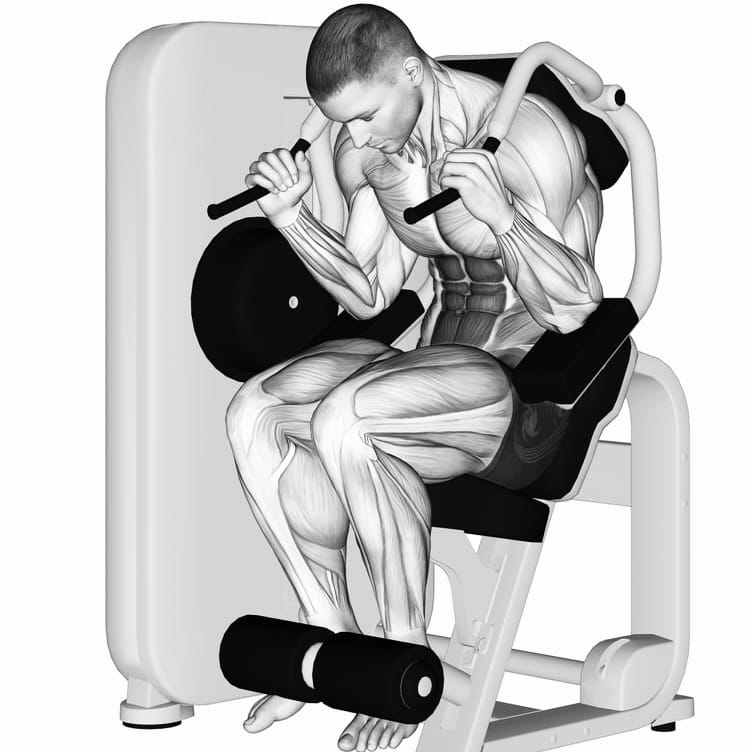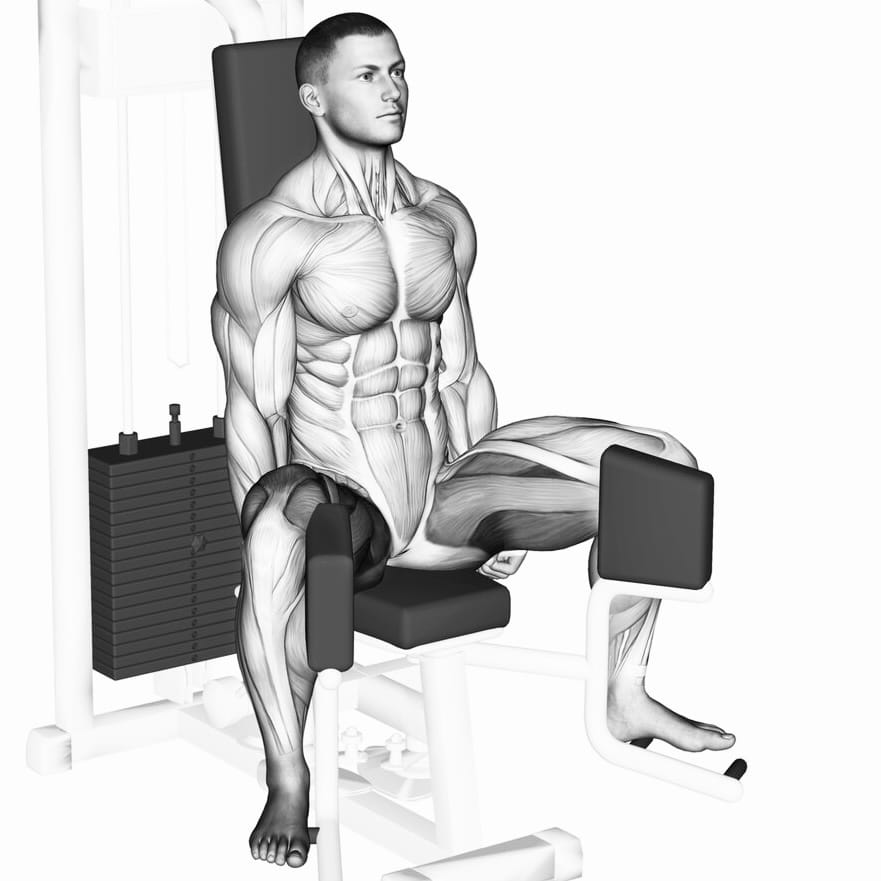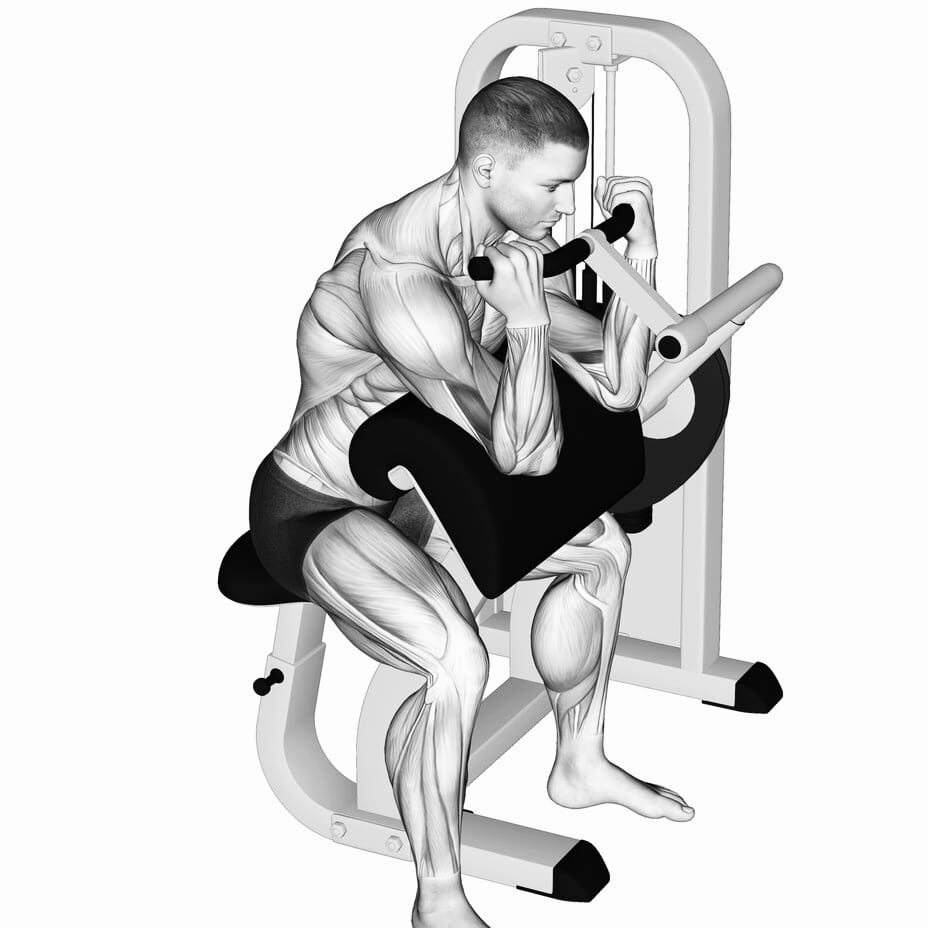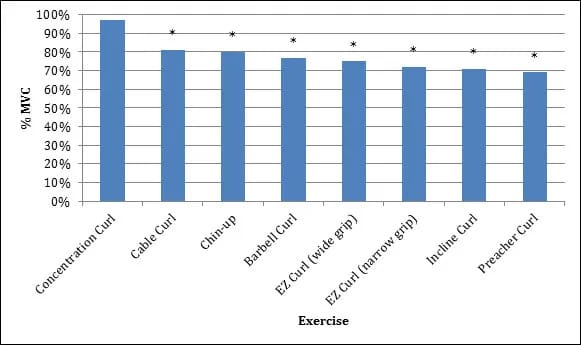Rage against the machines.

Most gyms make their money off two popular misconceptions: (1) that you need to go somewhere to get in shape and (2) that the standard gym equipment is going to assist in that goal.
Obviously gyms have their place in our society. They have a positive impact on health for many people. They can also function as gathering places, and foster a sense of community. I still have many friends and clients from my tenure at a gym almost two decades ago. But the Pandemic revealed that other methods of staying in shape are just as viable.
And although most modern gyms have functional equipment (medicine balls, free weights, TRX straps, etc) that serve a valuable purpose, many gym machines are antiquated at best — and some are much worse than that. Here's a look at some popular gym machines that you should avoid and the reasons why.
1) Ab Crunch Machine (pictured above)
Let's start with the obvious problem: this machine won't get you the highly coveted "six-pack." The only way you'll achieve that ephemeral goal is through diet, exercise, or photoshop. You can't "spot reduce" fat on a body part.
Secondly — and perhaps more consequentially — the machine isn't even effective for strengthening your ab complex. Anytime you're in a highly stabilized environment (such as seated on the ab crunch machine), you're limited in the amount of muscles you can recruit. This makes the exercise much less effective. Furthermore, in an effort to yield quick results, many people stack a ridiculous amount of weight on the machine, forcing them to use their upper bodies and lower back to bear the brunt of the exercise.
If you want really strong abs, focus on planks or push-ups instead. They target the entire ab complex in addition to the upper body and glutes (yes...glutes are involved in planks and push-ups!) and you can do them anywhere.
2) The Hip Adductor/Abduction Machine

This machine suffers from the same deficiencies as the ab crunch machine. So, if you're looking to melt away the fat from your thighs ... this machine isn't going to do the trick.
As mentioned above, you can't "spot reduce" fat. And even if the goals are more functional than aesthetic, this machine is still a poor choice. The stabilizer muscles that it ostensibly targets (the inner and outer thigh muscles) are called "stabilizer" muscles for a reason: they assist other larger muscles, such as the glutes, quads, and hamstrings, during movement. These muscles are often dormant and underutilized from extended sitting. Loading them up with a bunch of weight is counter-productive and could lead to injury.
A better alternative is to perform some exercises that allow the muscles to function in their proper role; such as body-weight squats or lateral walks with a resistance band.
3) The Preacher Curl Machine

Everyone has a list of their overrated bands, movies, or candy. (For the record: The Offspring, "Wicked," regular M&M's.) Body parts are no different. In the category of "most overrated muscle" I nominate the biceps. Unlike other mythologized body parts (such as the glutes and abs), they're not intimately related to the core. Biceps are also often shorthand for "strength," specifically as it pertains to men, but there's often no correlation.
I've known quite a few guys with bulging biceps that had a very weak core. To make matters worse, people (meaning guys) who focus on their biceps usually ignore their lower bodies, which looks asymmetrical...to put it very diplomatically.
OK. Rant over. So, you still want those glorious tee-shirt muscles. That's understandable. But there are more effective ways to target them than this machine. In fact, according to a 2014 study of bicep curl effectiveness, the "Preacher Curl" came in dead last. (1)

The problem is two-fold: isolating muscle groups is a very inefficient way to exercise and the amount of weight used on the machine can lead to injury. Rarely in life do we use our biceps in the way that the curl machine does. When we pick something up, for example, we don't snatch it out of thin air and then curl it towards our bodies. Instead, we bend down, and use almost the entirety of our lower and upper body muscles to pick the object up. The exercises we do should mimic the way we move in everyday life.
The other problem with the machine is the amount of weight people stack on it. It's usually way too much. This results in people raising their butts off the chairs and using tertiary muscles such as the deltoids. It also places way too much pressure on the tendons during the eccentric (lengthening) phase of the movement, which is a sure fire way to damage the muscle or injure your elbow.
Try doing a full-body movement such as a weighted squat instead. You'll build muscle just as rapidly and in a much more organic and healthy way.
4) The Leg Extension Machine

Take a vulnerable tendon (the patella, which runs along the front of the knee), lock it out in an extended position, and throw a bunch of weight on. What could possibly go wrong?
You've scene this scenario before. Go into any gym, and there's usually some guy that's maxed out the machine with his butt off the seat, neck veins bulging, screaming orgasmically. Don't do that. It's putting yourself at a high risk for injury. Plus it's socially awkward.
As with the other machines, you are seated in a fixed position, which inherently limits your range of motion and ability to recruit different muscle groups.
The best exercises to engage the leg complex are bodyweight squats or weighted squats. If you don't have balky knees, weighted lunges are also an excellent full-body alternative.
Sources:
1) Scott Young et al. "Ace Study Reveals Best Biceps Exercises." (08/2014) American Council on Exercise
Reach out: joshua@joshuabrandtpt.com
Member discussion